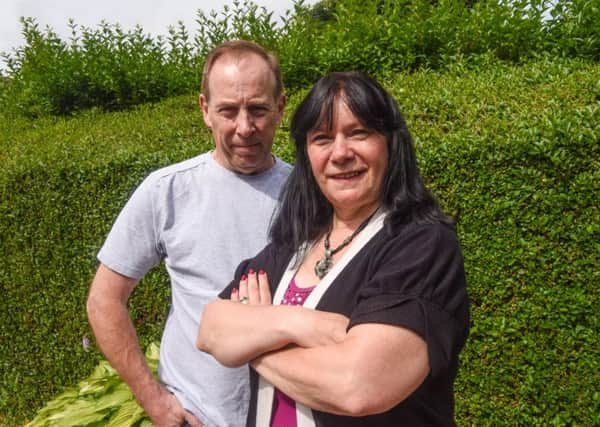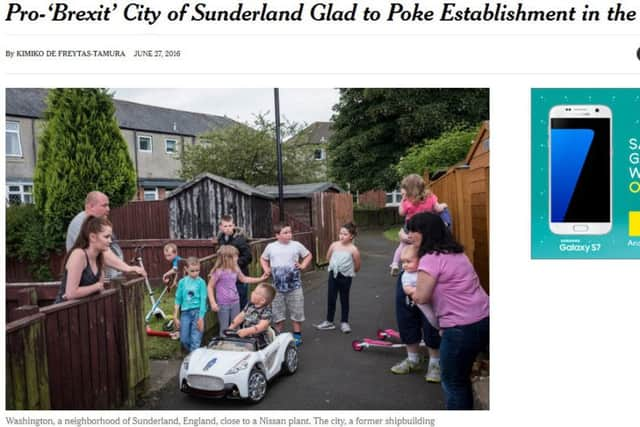Washington grandma's anger over New York Times article


The Echo highlighted anger over the New York Times article about the city in the wake of its vote to quit the EU.
Kathleen Ranson was not interviewed for the piece - but appeared in an accompanying picture, showing neighbours and children outside their homes in Park Avenue, Concord.


Advertisement
Hide AdAdvertisement
Hide AdKathleen did not initially realise what the pictures were for - but soon found out when she and husband Raymond went out for lunch.
“We went to the Washington Arms in the village,” said 56-year-old Kathleen.
“People had already seen it. There was a couple sitting in the corner who said ‘We thought you were the mother of all those nine children’ and then she asked ‘Are you claiming benefits for them all?’
“I laughed but then I thought ‘That’s what people think. That’s what it looks like.’


Advertisement
Hide AdAdvertisement
Hide Ad“In the pub they were taking the mickey, but they know me in the pub, the staff know me. These other people, I didn’t even know them, and that’s what they said to me.
“I have never claimed benefits. I was just so angry. It’s awful.”
A former dinner lady, mum-of-two and grandmother-of-four Kathleen now works part-time as a stock auditor for IT firm Hewlett Packard: “I have worked all my life,” she said.
“I started work as soon as I left school and I worked part-time when my children were young. My husband works full-time, too.”


Advertisement
Hide AdAdvertisement
Hide AdKathleen believes the picture paints an unrealistic picture because it was taken at the weekend. Photographer Adam Ferguson had not been accompanied by reporter Kimiko de Freytas-Tamura: “I think the Saturday was when somebody came out to interview people and the photograph was taken on the Sunday,” she said.
“It was a sunny afternoon - it does not mean that people were off work, all we were doing was watching the children play.
“I thought at first it was because the little boy over the road’s birthday had been a week or so before and it was the photographer bringing the photographs back to show them.
“He was talking about the EU - I thought he wanted to do something about the children growing up, not knowing what it was like to be part of the EU.
“Then the next day, my husband was at work and people were saying it was on Facebook.
“They need to apologise to Washington and Sunderland people. We are not like that - we are workers.”